On a sunny weekend during rice-planting season, the people of Japan's largest rice-producing prefecture, Niigata, welcomed ministers and delegates from the 20 major economies of the world as well as six invited countries and eight organizations, as the G20 Niigata Agriculture Ministers' Meeting was held there on May 11 and 12.
At a news conference held on the second day of the event at Toki Messe Niigata Convention Center located in the heart of the city of Niigata, Agriculture Minister Takamori Yoshikawa said that the meeting concluded successfully because of a declaration that aims to ensure the sustainability and productivity of the agri-food sector to feed a growing global population.
"The G20 meeting confirmed the importance of encouraging innovation in agriculture through the utilization of new technologies, including the latest information and communication technologies, artificial intelligence, and robotics," said Yoshikawa.
He also noted that discussions included topics such as developing human resources to include women and younger generations; agro-food value chains; as well as collaborations with nonfarm businesses, the public sector and academia.
"I introduced efforts made by Niigata Prefectural Agricultural College to obtain Global G.A.P. certification as an example of best practice of human resource development during the meeting," said Yoshikawa. The college has engaged its students in the process of obtaining the Global G.A.P., a worldwide standard for good agricultural practices, for the rice and strawberries they produce.
The meeting also confirmed that society needs to tackle issues concerning food loss and waste, measures against food price volatility and animal and plant health at the global level. Participants also confirmed a need to keep striving for alleviating hunger and malnutrition in line with the U.N.'s Sustainable Development Goals.
Students have their say
During the plenary session held on the first day, students from Kohshi Secondary School presented a proposal addressing imbalances in the food supply among advanced and developing countries. "Some countries suffer from food shortages while others face problems surrounding food loss and waste," said one of the presenters, expressing her shock when learning about the tremendous gap between the students' lives and those of the 821 million undernourished people in the world. The students also explained there are many areas in the world where there is not enough water for conventional irrigation systems.
Then, they suggested that drip irrigation can reduce water usage to one-fifth of conventional irrigation use. At the same time, they proposed a bold and novel idea of what they call the "agricultural Olympics" to help solve the financial difficulty in introducing drip irrigation technology. "Developed countries form teams with developing countries with similar climate and geographical conditions, and work together to improve irrigation, promote mechanization and develop infrastructure," a presenter said. This may serve as an opportunity for researchers and providers of advanced technologies to test the full capabilities of new machinery, products and services and for participating developed countries to win international recognition for their contributions.
'Japan's Farming Village'
At a reception following the first day of summit proceedings, guests sampled various delicacies made using seasonal ingredients from Niigata Prefecture and areas hit hard by the Great East Japan Earthquake such as Fukushima and Miyagi prefectures. Yoshikawa mentioned at a news conference the following day that serving high-quality products from disaster-hit areas was significant in demonstrating their recovery to the world and encouraging ongoing support from the global community.
The theme of the reception was "Japan's Farming Village in Early Summer." Displays and stalls depicted fields, forests, a pond and a farmer's house. Guests enjoyed tea ceremony presentations and picking tomatoes and strawberries.
Niigata Gov. Hideyo Hanazumi greeted guests at the beginning of the reception and highlighted Niigata's significance as one of Japan's major agricultural prefectures in hosting the meet where sustainability of agriculture was discussed. "Niigata continues to try new things in the agricultural sector such as using yukimuro (snow rooms) to age and improve the flavor of various foods and has developed a new varietal of rice, Shinnosuke," he said.
Niigata Mayor Yaichi Nakahara made a toast, saying that it was an honor for Niigata as a city with a good balance of advanced urban functionality and rich nature. Koshi no Kanbai Junmai Daiginjo Kinmuku made by Ishimoto Sake Brewery in Niigata was used for the toast.
The area's Restaurant Bus was also there to offer a space for guests to enjoy different foods, such as sweets using local Echigohime strawberries. The bus is used in area tours as one element of Niigata's "Gastronomy Tourism" campaign, which offers special experiences of Niigata's gourmet, culture and history for tourists.
Reception guests were also treated to displays of traditional and contemporary performing arts originating from the prefecture.
The first performance was Niigata Furumachi Geigi, a 200-year-old performing art and important cultural legacy drawing from local geisha history, consisting of traditional singing, dancing and music by female professional performers in kimono. The second performance was a dance and Japanese drum parade by participants of the Niigata Soh-Odori, one of Japan's largest dance festivals that started in 2001. Guests enjoyed taking pictures and some even joined in playing wadaiko Japanese drums with the performers.
A warm welcome
During the two-day ministerial meeting, local children and volunteers warmly welcomed delegates with flowers and plenty of photo opportunities at Niigata station and airport, the entrance of the meeting venue and other places.
Colorful welcome message cards drawn by children from 37 elementary and junior high schools in Niigata Prefecture decorated a large panel in the atrium. Another panel at the entrance of the venue was adorned with a mosaic made up of about 1,500 photos of Niigata residents smiling; representatives from all participating countries and organizations took an official photo in front of the panel.
Some of the delegates posted photos and videos on social media to express their delight to people back home.
A MICE destination
The city of Niigata contributed to the success of the event with warm hospitality, efficient traffic control and transportation arrangements, as well as appropriate security both inside and outside the venue, displaying the city's pride and capability as one of the G20 Summit MICE (meetings, incentives, conferences and exhibitions) venues in Japan.
Toki Messe previously hosted the Asia-Pacific Economic Cooperation Ministerial Meeting on Food Security in 2010 and Group of Seven Agricultural Ministers' Meeting in 2016.
Toki Messe stands on what used to be a small island called Bandaijima but is now connected to the mainland. It lies at the mouth of the Shinano River. Japan's longest river that also flows through the city of Niigata into the Sea of Japan. The area has long been prosperous as a port town, especially during the Edo Period to the Meiji Era when it was one of the ports of call for kitamaebune, cargo ships that traveled on the Sea of Japan.
The city of Niigata continues to be a key point for transportation, with easy access from Tokyo by shinkansen; via air, it is accessible from many of Japan's major cities including Tokyo, Osaka, Nagoya, Sapporo and Fukuoka as well as from cities overseas including Taipei, China's Harbin and Shanghai, and Seoul.
Toki Messe is five minutes by taxi and 15 minutes by bus from Niigata Station on the JR Joetsu Shinkansen Line. The venue is about 20 minutes on foot from the station, and makes for a pleasant walk during fine weather. It takes about 20 minutes by taxi from the airport to Toki Messe. Buses are also available between the airport and Niigata Station.
The Toki Messe convention complex is comprised of an exhibition hall, 13 conference rooms of various sizes and the Hotel Nikko Niigata. A panoramic view of the city of Niigata with the vast Niigata Plain in the background can be enjoyed from the observatory on the 31st floor of the hotel.
During the G20 Summit ministerial meeting, students of Miyaura Junior High School in Niigata offered guests a thorough explanation of Niigata's climate, geography, history, culture and nature as they showed visitors a 360-degree view of the city from the observatory.
Tasty technology
Dozens of companies and organizations set up booths to display their agricultural technologies and products outside the hall where the ministerial meeting took place.
The G20 Niigata Agriculture Ministers' Meeting Promotion Council displayed agricultural, forestry and fishery products of Niigata including 88 kinds of sake, tomatoes and a variety of edamame called chamame, mangoes grown in greenhouses heated with hot spring water of 64 degrees Celsius. Various "functional" foods promoted by the prefecture including food processed using high-pressure techniques, food designed to be eaten during disasters and during rescue operations, and low-protein rice for patients with kidney problems were also displayed.
A project featuring smart agriculture conducted in the city of Niigata was also on display. Several companies specializing in new technologies useful in agriculture such as remote sensing systems to monitor crop conditions using satellites and drones, and farm management application for PCs and smartphones collaborated to support the event.
The council also showcased Niigata crafts such as Niigata lacquerware, delicate wood carvings from Murakami and hammered copperware from Tsubame.
Niigata's Shirone district is famous for its giant kite battle, an annual event dating back about 300 years. In the ministerial meeting atrium, two of the giant kites used in actual battles were displayed. There was also a booth introducing Niigata's Sado Island, two-and-a-half hours travel by ferry from Niigata Port. It is a picturesque island blessed with nature that has been designated as a Globally Important Agricultural Heritage System by the Food and Agriculture Organization of the United Nations.
Students of Niigata Prefectural Kaiyo High School had a booth displaying a soy sauce made using local marine ingredients such as salmon and kelp, which they produced with their teachers.
Hands-on fun
Additionally, a field tour took delegates to several notable locations on May 12.
At the Northern Culture Museum, delegates participated in various cultural experiences including tea ceremony. The museum used to be a private residence of Niigata's wealthy, land-owning Ito family during the Meiji Era (1868-1912). The delegates enjoyed their time as they took commemorative photos with full-blown Japanese wisteria behind them.
The delegates then went to Komehachi, a company that grows rice, soy beans, wheat, vegetables and other produce through smart agriculture utilizing cutting-edge information and communications technology; a demonstration of an unmanned rice-planting machine was among the activities.



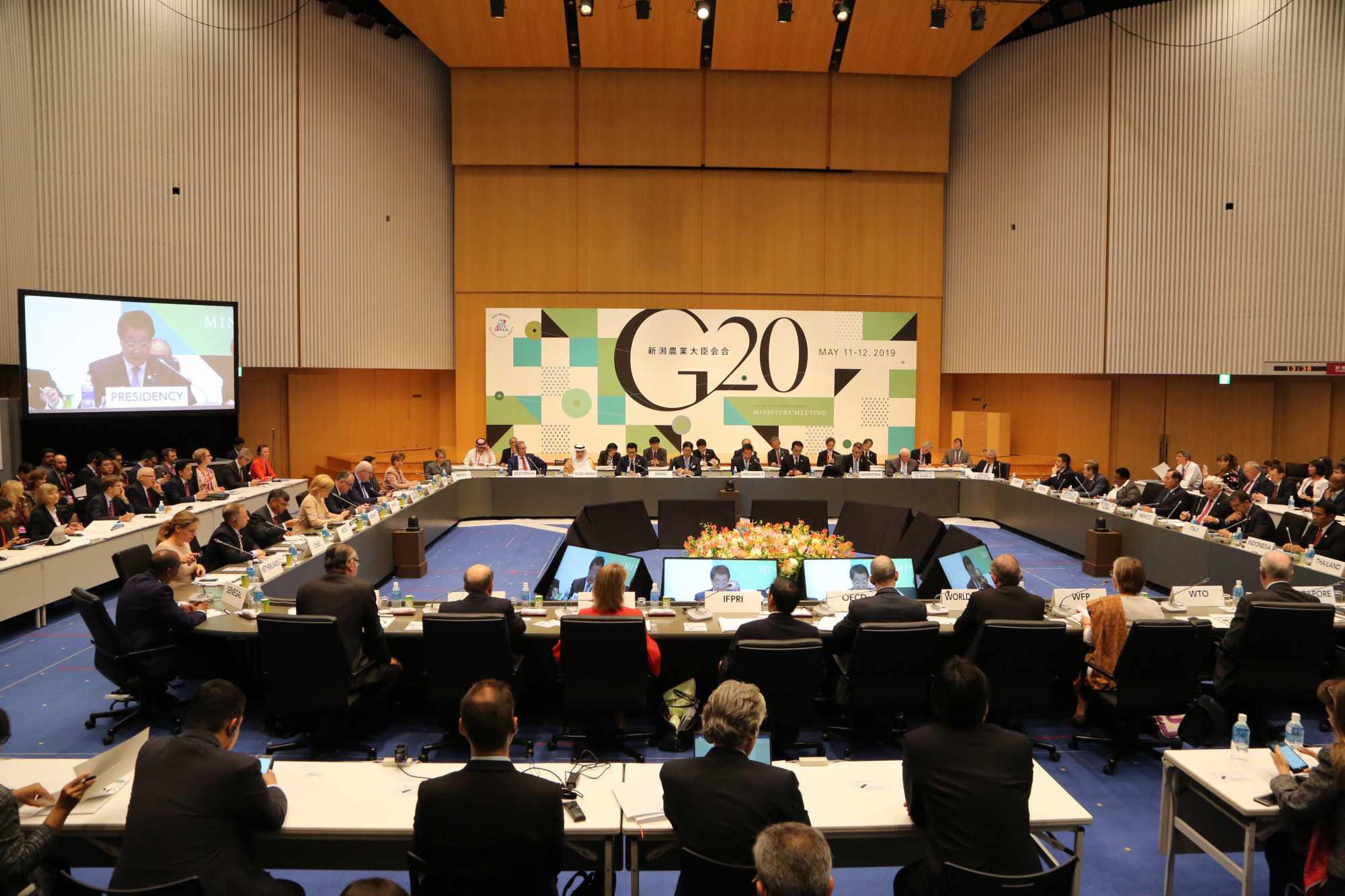
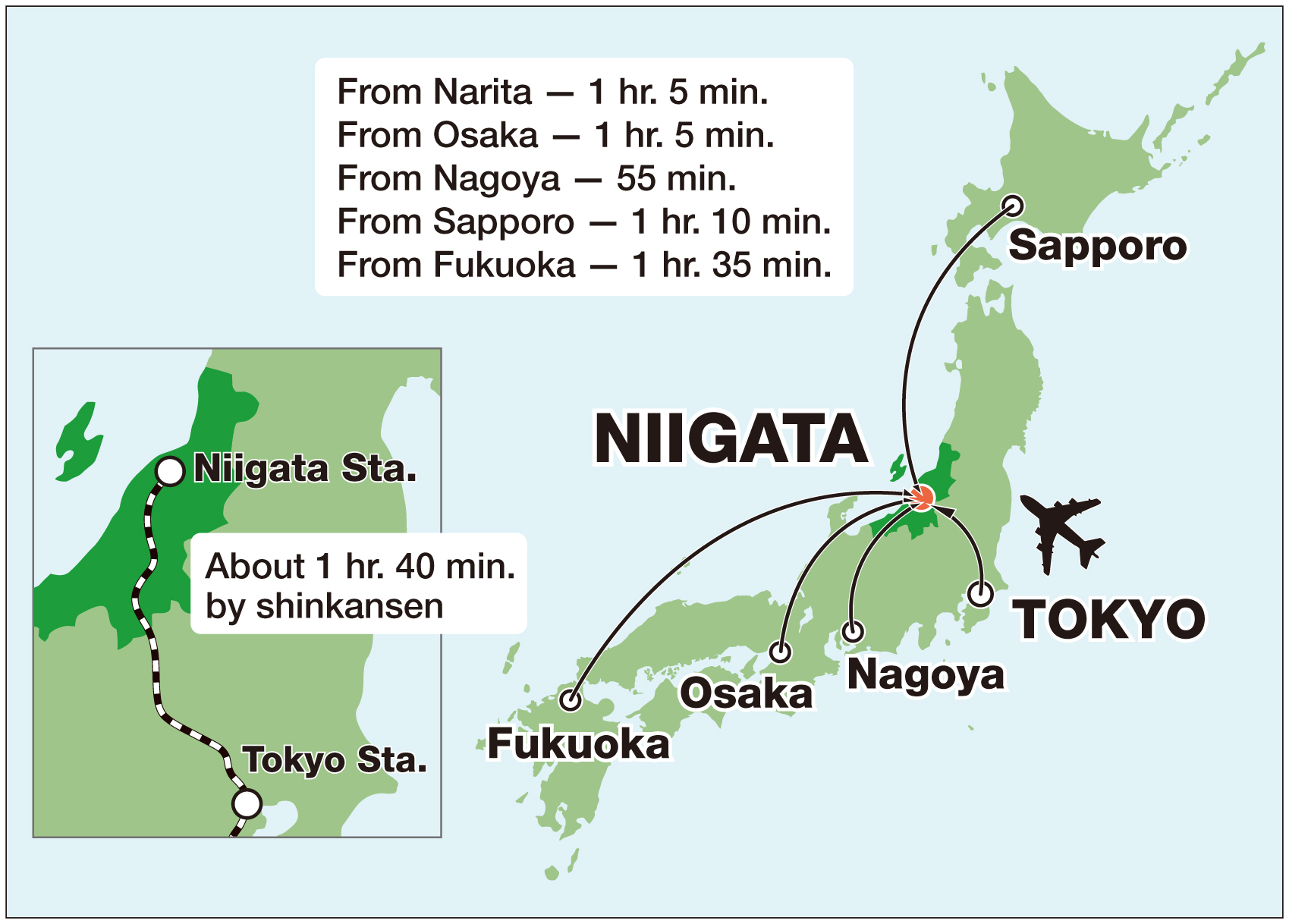
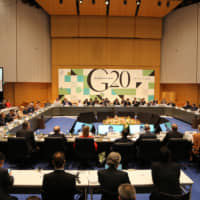
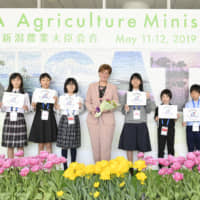
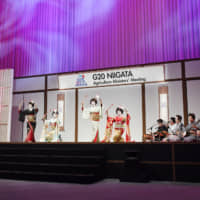
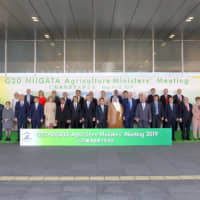
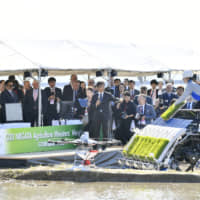
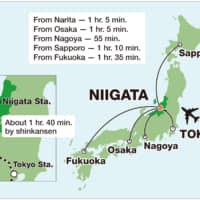















With your current subscription plan you can comment on stories. However, before writing your first comment, please create a display name in the Profile section of your subscriber account page.